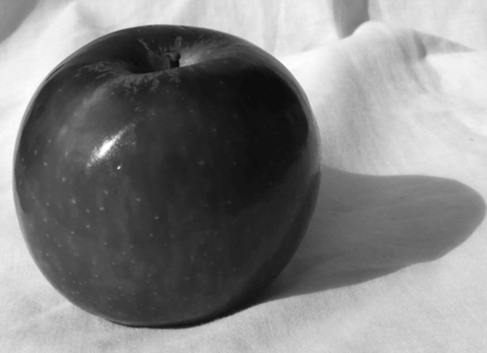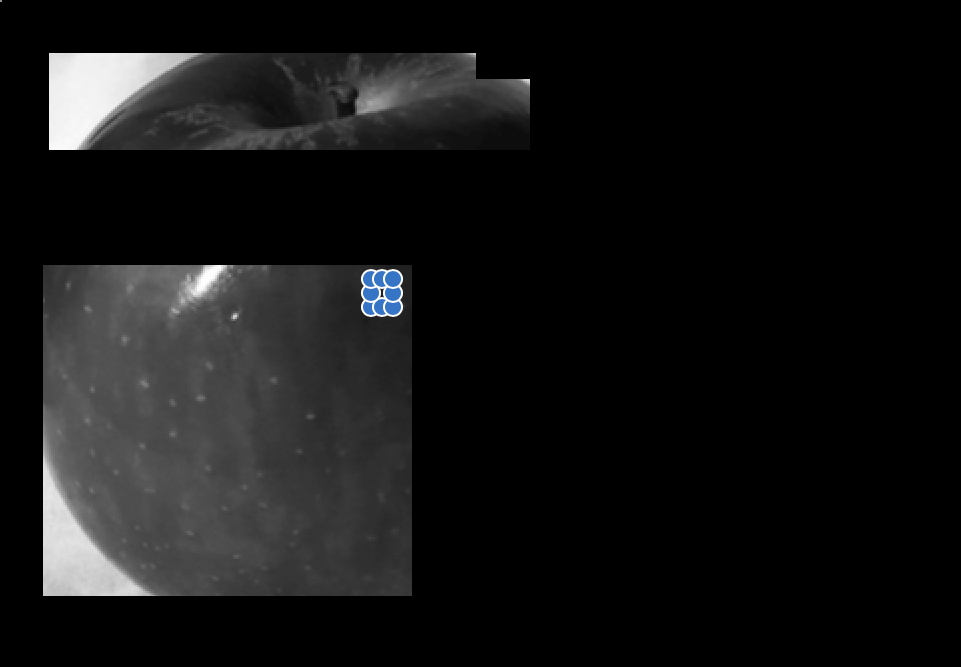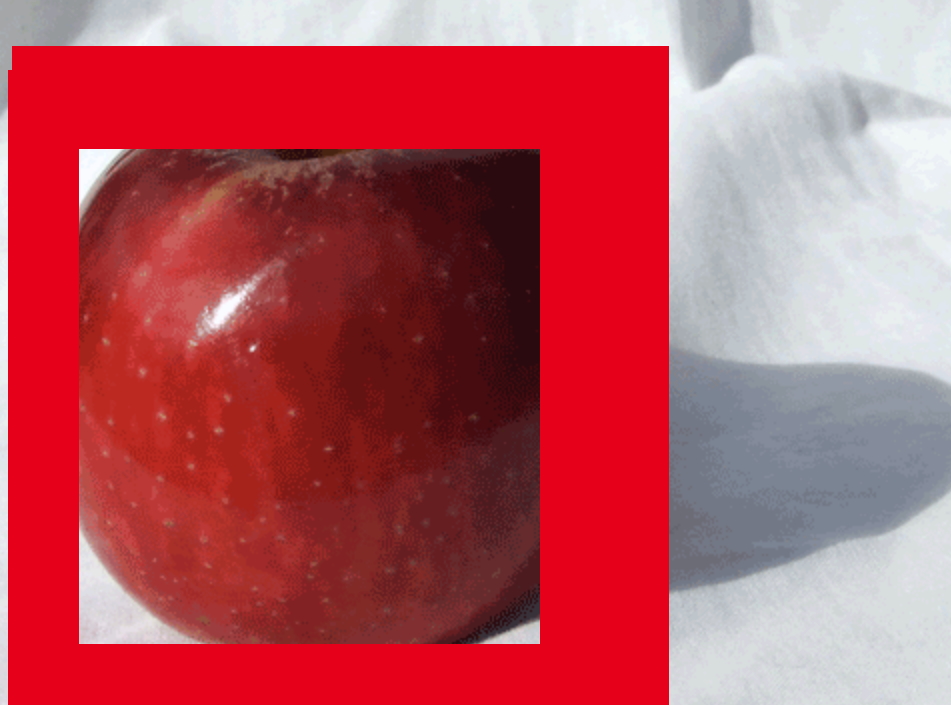
So here is the same apple from last week along with its colorful version.
Like I mentioned last week, controlling values (lights and darks of color in painting) is one of the most difficult issues for an artist. It doesn’t help that there is no fast and perfect way of studying it. (Trust me, I know) because color (and thereby values) are fluid and relative to its surroundings.
The bright red apple above almost seems lighter than its grey counterpart. Nope. They are the same value. Color can throw us off.
There are countless instructors that are all over the internet that speak much more eloquently than I do about values. But heres the only thing you need to know. It is all relative. Because Just like grey is not a color (see previous blogs by this name) so too, colors are not absolute.
The apple in the greyscale version looks very dark….

Until you surround it with black….

The color version seems very red….

…until you surround it with something “red-er. ” Otherwise known as high chroma.

It is easier to see how dark that red apple is now right? And how it is not as “red” as you think. It is lower in chroma than the high-chroma box surrounding it.
So if I see something in a photo or in a landscape and I want to find that color in among my sticks or I need to mix it up, (either high or low chroma) how can I find a color that approximates it? (Pssst– because we will never match it perfectly…) I can tell ya, it takes a lot of trial and error because what you pick up at first may seem perfect, and then may change, shift or seem lighter or darker once you put a dash of it in a painting. It may even seem to change color altogether. We have all done it- I have grabbed the wrong color 10 million times and only in the last 10 years have I gotten slightly better at it.
What helps? The number one rule of any image is to control the extremes- the King and Queen of values- Black and White.
More on that next week

Very interesting. Glad to have you back.
🙂🙂
Excellent blog! Thank you for sharing
😊
Thanks Christine. Enjoy your log